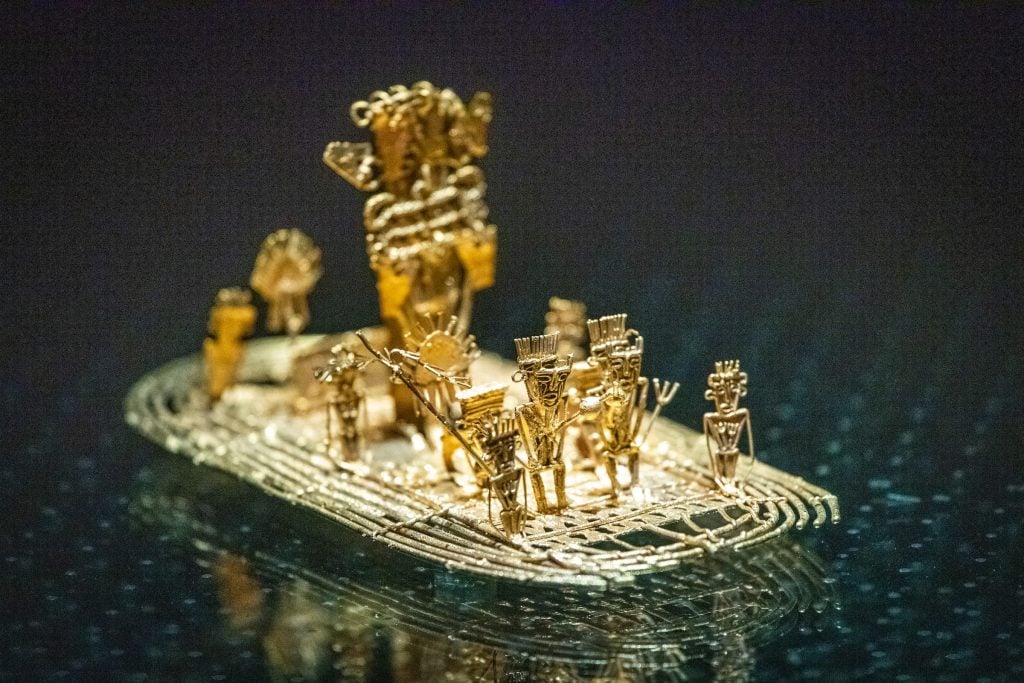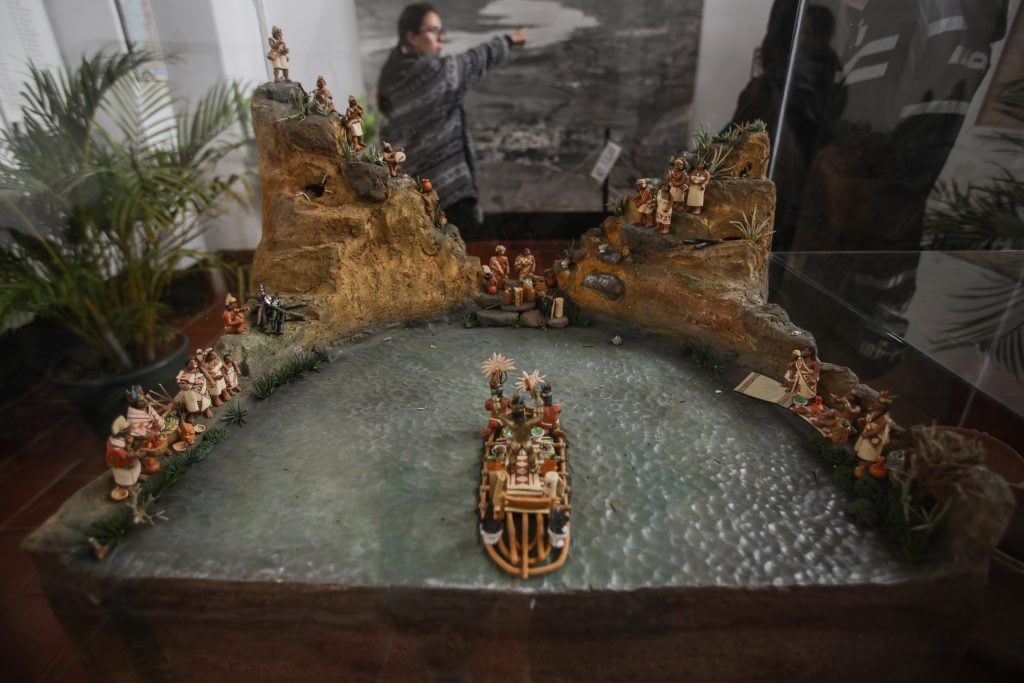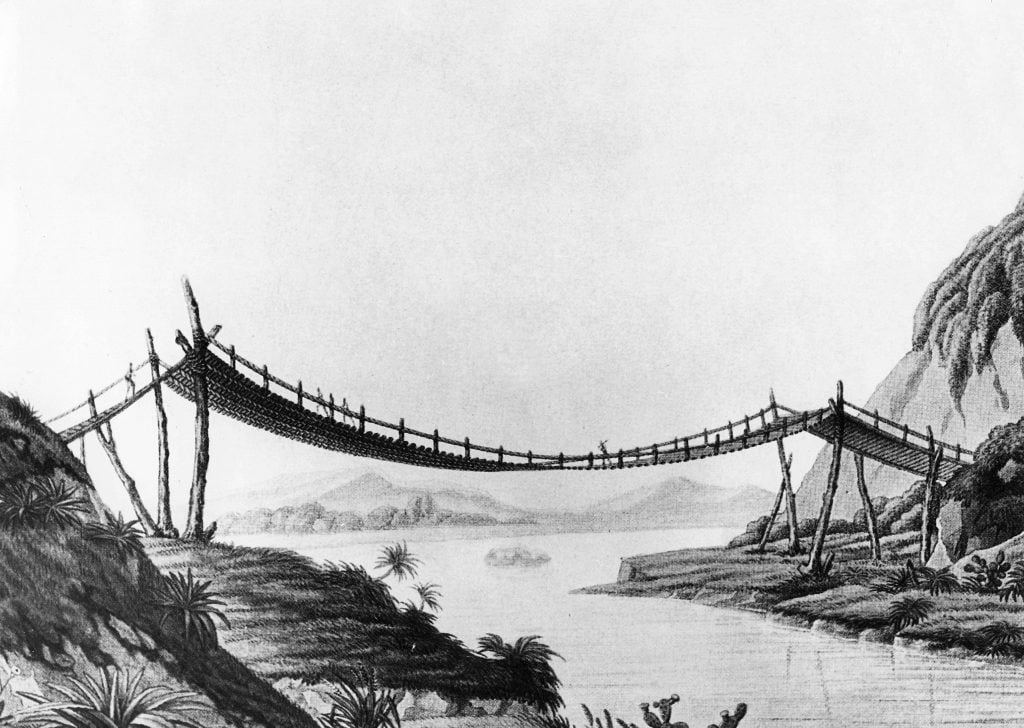Archaeology & History
The Hunt: El Dorado, Fabled City of Gold, Remains Hidden in the Amazon
Centuries have seen countless explorers brave hardships to find the fabled city.

An ancient city of gold somewhere in South America is rumored to have been so fabulously opulent that it has become an expression for any place where people can amass great fortunes. But it has been so elusive that it has become synonymous, like the Holy Grail, with a prized object long sought but never found. Countless men have given their lives in the search for its riches as they ran out of supplies and food, were felled by disease, or encountered violent resistance along the way.
The goal of numerous explorers over centuries, from crews with wooden ships and horses to teams with drones and radar, El Dorado is a lost city, reportedly stretching over great distances in the Amazon rainforest and hidden from prying eyes by its remoteness and the warlike peoples in the forest around it. (The region got its name, in fact, from Spanish explorer Francisco Orellana, who compared the fighting women he encountered during his own search with the Amazons of ancient Greece.)

Pre-Hispanic artifacts of the Muisca on view at the Muisca Indigenous Museum in Guatavita, Colombia, 2022. Photo: Juancho Torres/Anadolu Agency via Getty Images.
Tales of El Dorado, its name Spanish for “the golden,” began with the Muisca peoples’ perhaps-mythical account of a tribal chief who, in an initiation rite, coated himself in gold. He then went onto Lake Guatavita, near present-day Bogotá, threw a pile of gold objects into the water, and washed the gold off himself as his attendants also threw an abundance of gold objects into the lake. The 16th-century Spanish referred to him as the Golden Man or the Golden King.
“This is the ceremony that became the famous El Dorado, which has taken so many lives and fortunes,” according to a 1638 letter from writer Juan Rodríguez Freyle. That pile of loot was soon fused in the lore with an account of an entire city made of gold. Others posited that the city was called Manoa and was situated on the shores of a legendary Lake Parima, which has also never been found.
Supposedly one of the first to claim he visited it was the Spanish explorer Juan Martinez, who reported that the locals had brought him there blindfolded in 1531 and allowed him to witness it, and that he traveled an entire day through its streets before reaching the emperor’s palace.
When Francisco Pizarro conquered the gold-rich Inca civilization in Peru in 1532, Spaniards believed all the more firmly in the fabled El Dorado. Francisco de Orellana, a relative of Pizarro, unwittingly traveled the entire length of the Amazon, the world’s longest river, in his search for it.

John Everett Millais, Pizarro Seizing the Inca of Peru (1846). Photo: Universal History Archive/Universal Images Group via Getty Images.
Some gold did turn up in a lake, seeming to justify the continued search. After he found Guatavita, a sacred lake in the Andes, in 1537, conquistador Gonzalo Jiménez de Quesada partly emptied it using a bucket chain. From its depths emerged a few thousand pesos of gold.
Bogotá entrepreneur Antonio de Sepúlveda, for his part, cut an enormous notch in the bank of the lake in 1580, removing a great deal of water before the notch collapsed and killed many of the workers. For his trouble, he uncovered three times as much gold as Quesada had, and sent it to King Philip II of Spain. Alexander von Humboldt, the 19th-century German explorer, would calculate that there could be as much as $300 million in gold in the lake.
English explorer Sir Walter Raleigh went looking for El Dorado in 1594, followed by the Spanish conquistadores, who scoured modern-day Colombia, Venezuela, Guyana and Brazil in the search. Less well-known expeditions continued over the 17th and 18th centuries, bodies piling up but ultimately turning up nothing.
In findings from a major scientific investigation, Von Humboldt would claim, ca. 1800, to have disproven the existence of the lake El Dorado is meant to have flanked. In the following decades, two other researchers came to the same conclusion.

Alexander von Humboldt’s sketch of a bridge over the Orinoco river. Photo: ullstein bild via Getty Images.
But the legend did not die. The search was revived a century later, when an English company drained the lake almost entirely. Despite their efforts, they extracted artifacts worth only about £500, some of which went to the British Museum, some of which sold at Sotheby’s London. In 1965, the Colombian government designated the lake as off-limits to further attempts.
The quest continues with the help of modern technology. A team led by Venezuelan archaeologist-explorer Jose Miguel Perez-Gomez went looking, employing aerial and satellite remote sensing surveys obtained from NASA’s Shuttle Radar Topography Missions (SRTM), the Landsat Enhanced Thematic Mapper Plus (ETM+) instrument, and TanDEM-X synthetic aperture radar (SAR) sensors from the German Aeropsace Center’s Microwave and Radar Institute, according to a 2019 paper. Of all the unlikely results, their findings strongly resembled the outlines of a lake in a map drawn by none other than Sir Walter Raleigh.
The area is not without rich natural resources, so dreams of a city of gold can perhaps be forgiven. Illegal extraction operations are underway to this day, in fact, in what the Venezuelan government in 2016 designated the Orinoco Mining Arc, which covers 12 percent of the country’s territory and is rich not only in gold but also bauxite, coltan, and diamonds, possibly totaling some $2 trillion in value. You can literally see the modern gold mining from space: in 2021, an astronaut passing over eastern Peru in the International Space Station used a Nikon camera to snap a photo that reveals numerous gold prospecting pits.
Over the years, El Dorado has shown up in popular culture countless times, from a 1989 Neil Young record to video games, a board game, and the Cadillac Eldorado. So even as the city has remained stubbornly hidden over centuries, it is, in its way, all around us.
The Hunt explores art and ancient relics that are—alas!—lost to time. From the Ark of the Covenant to Cleopatra’s tomb, these legendary treasures have long captured the imaginations of historians and archaeologists, even if they remain buried under layers of sand, stone, and history.





